Claude Monet, Impressionist (1840 – 1926)

Birth and Early Life

Born on November 14, 1840, in Paris, Claude Monet was destined to become one of the most influential artists in history. However, his beginnings were anything but illustrious. His father, Adolphe Monet, hoped Claude would take over the family grocery business, but Claude had other aspirations. The allure of the Seine River, the picturesque landscapes of Normandy, and the vibrant life of Paris drew him into the world of art from a young age.
Monet’s childhood was steeped in nature. Moving to Le Havre at age five, he spent hours by the sea, watching the changing tides and the play of light on the water—a theme that would dominate his work for decades. During these formative years, Monet first displayed his artistic talents, sketching caricatures of local residents, which he sold to make pocket money. Despite his father’s disapproval, this early success fueled his determination to pursue art.
Education and Early Struggles
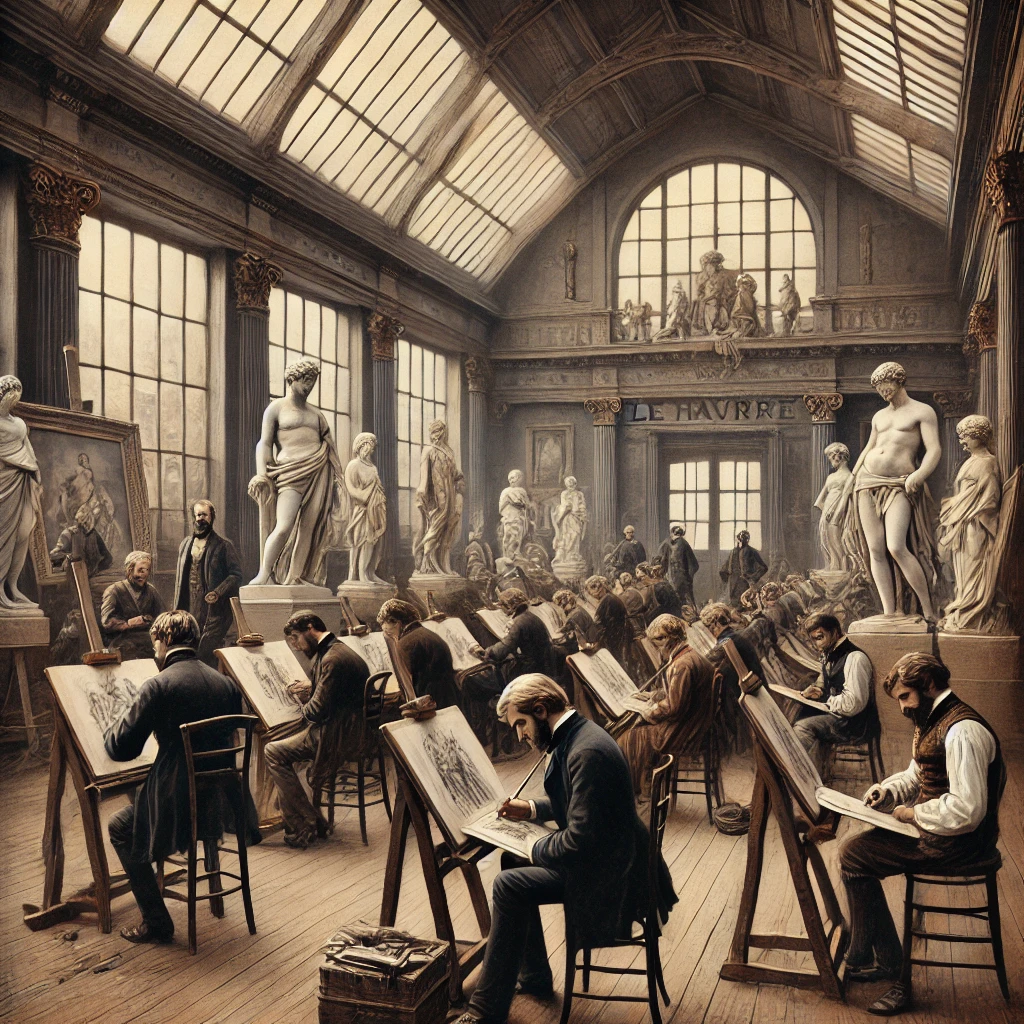
Monet’s formal education in art began in 1851 when he entered the Le Havre secondary school of the arts. His early mentors included Jacques-François Ochard and Eugène Boudin, who introduced him to plein-air painting. This technique would become synonymous with his name. Boudin’s profound influence instilled in Monet a deep appreciation for capturing the transient effects of light and atmosphere.
However, Monet’s path was with obstacles. His early works were rebuked, and his father’s refusal to support his artistic ambitions forced Monet to seek financial stability. After a brief stint in the military, which only solidified his desire to paint, Monet returned to Paris in 1862. He enrolled in the Académie Suisse, where he met Pierre-Auguste Renoir, Frédéric Bazille, and Alfred Sisley—fellow artists who would later become pivotal figures in the Impressionist movement.
The Birth of Impressionism
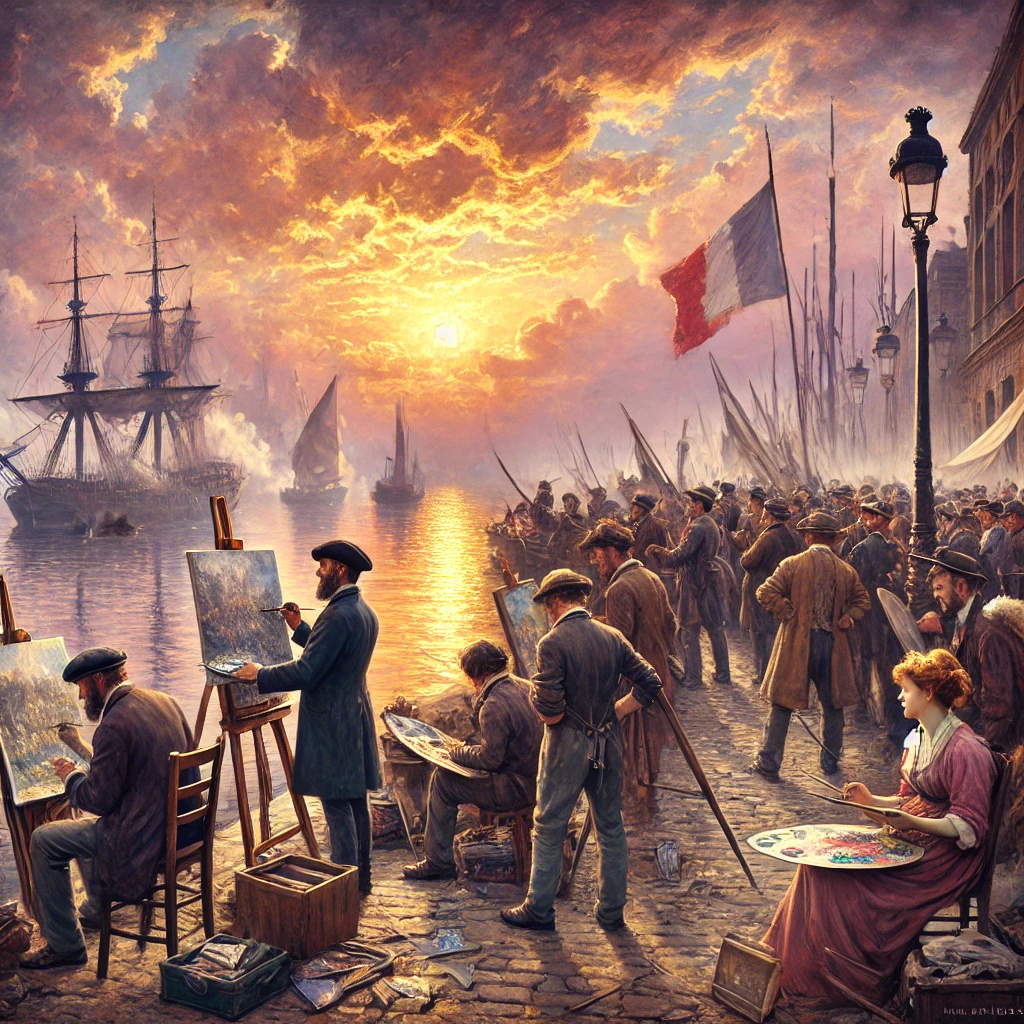
The 1860s were turbulent in French history, marked by political upheaval and the Franco-Prussian War. Amidst this backdrop, Monet and his contemporaries sought to break free from the rigid conventions of the art establishment embodied by the Académie des Beaux-Arts. They were frustrated with the traditional focus on historical and mythological subjects, favoring scenes of everyday life painted with loose brushstrokes and vibrant colors instead.
Monet’s revolutionary approach culminated in 1872 with the creation of “Impression, Sunrise” (Impression, Soleil Levant). This painting, depicting the port of Le Havre at sunrise, was exhibited at the first independent show organized by Monet and his peers in 1874. A critic derisively labeled the group “Impressionists,” a term they proudly adopted. This signified their departure from academic standards and focus on capturing fleeting moments of light and color.
Challenges and Breakthroughs
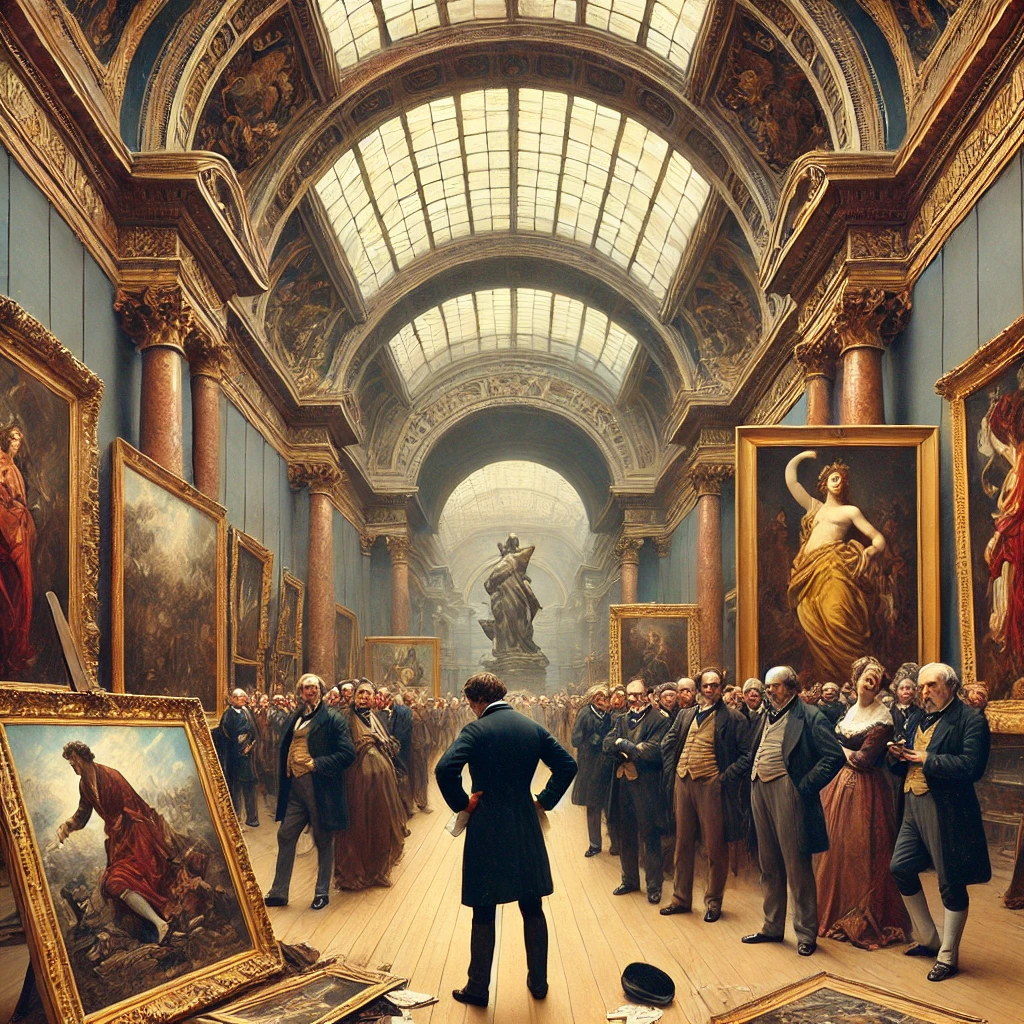
Despite the birth of Impressionism, Monet’s career was fraught with challenges. The Salon, official art exhibition of the Académie des Beaux-Arts in Paris, often rejected his works, and financial struggles plagued him. The Paris Salon was France’s most prestigious art exhibition during the 19th century, and gaining acceptance there was crucial for artists of the time. He frequently moved, searching for inspiration and affordable living conditions. However, these difficulties only seemed to strengthen his resolve. Monet’s persistent exploration of light, weather, and seasons led to some of his most iconic series, such as the “Haystacks,” “Rouen Cathedral,” and “Water Lilies.”
Monet’s obsession with capturing the effects of light is perhaps best illustrated by his work on the “Rouen Cathedral” series, painted between 1892 and 1894. Monet rented a space across from the cathedral and meticulously painted the facade at different times of the day in varying weather conditions. The result was a stunning array of canvases that conveyed the cathedral’s ever-changing appearance depending on the light. This feat cemented Monet’s reputation as a master of Impressionism.
Historical Context and Influence
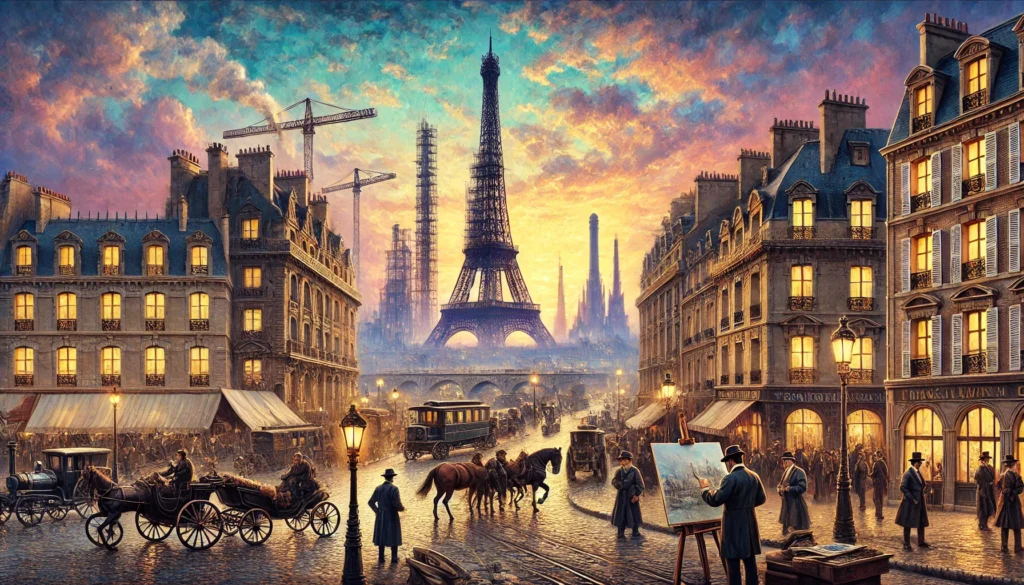
The late 19th and early 20th centuries were times of significant change in France and globally. The Industrial Revolution transformed cities, and new scientific discoveries reshaped society’s understanding of the world. These developments profoundly impacted Monet and his fellow Impressionists, who sought to capture the modern experience in their work.
Monet’s paintings reflect the era’s fascination with speed, change, and the passage of time. His revolutionary technique of painting en plein air allowed him to capture the dynamic interplay of light and atmosphere in real-time. This approach resonated with the rapidly changing world around him, and his work symbolized the spirit of innovation and modernity that defined the late 19th century.
Friendships and Collaborations
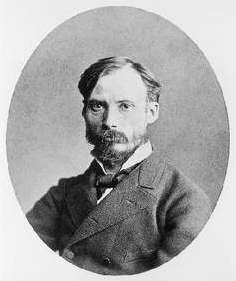
Image by an unknown author, Musée d’Orsay, Dist. RMN-Grand Palais / Patrice Schmidt, public domain.
Monet’s artistic journey was deeply intertwined with his relationships with other artists. His friendship with Renoir, Sisley, and Bazille fostered a collaborative spirit that was crucial to the development of Impressionism. The group often painted together, sharing ideas and techniques that pushed each other to new creative heights.
However, these relationships needed tension. Monet’s commitment to his vision sometimes led to disagreements, particularly over the commercialization of their work. Despite these challenges, the camaraderie among the Impressionists was a driving force behind the movement’s success.
Evolution of Style and Legacy
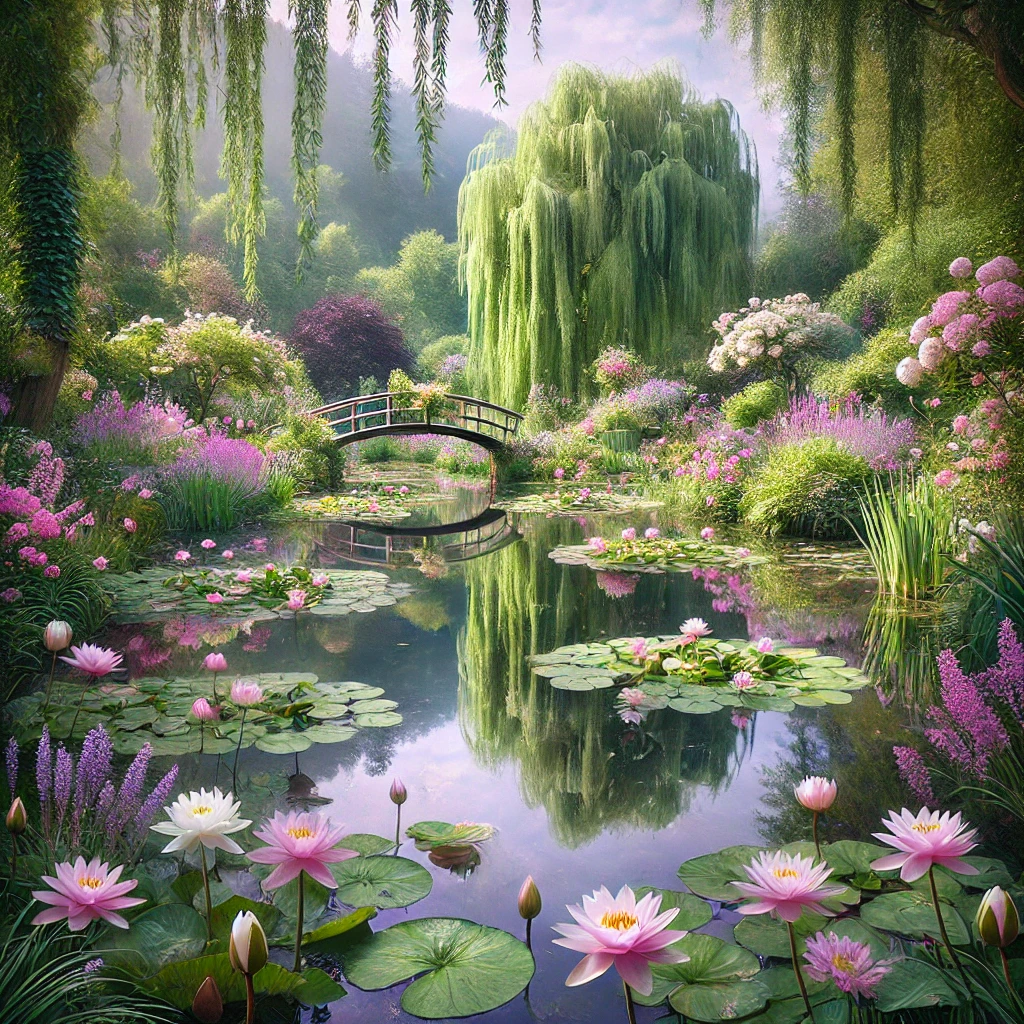
Monet’s career progressed, and his style evolved from his early works’ bright, vibrant tones to his later years’ softer, more muted palettes. This shift is most evident in his “Water Lilies” series, created in his garden at Giverny, where he lived from 1883 until his death. These paintings, characterized by their large scale and immersive quality, represent Monet’s lifelong fascination with nature and his desire to capture its ephemeral beauty.
Monet’s influence extends far beyond the boundaries of Impressionism. His innovative techniques and relentless pursuit of capturing the effects of light have inspired countless artists and movements, from Post-Impressionism to Abstract Expressionism. His work laid the groundwork for modern art, challenging traditional notions of representation and opening the door to new forms of expression.
End of Life and Reflection on Legacy

Claude Monet passed away on December 5, 1926, at 86. He left behind a body of work that revolutionized the art world and offered a new way of seeing the world. Monet’s legacy is not just in the paintings he created but in the movement, he helped to birth—a movement that celebrated the beauty of the everyday and the ever-changing nature of reality.
Today, Monet’s work is celebrated in museums and galleries worldwide, and his influence is evident in the work of contemporary artists. His paintings continue to captivate art enthusiasts, offering a glimpse into the world through the eyes of one of history’s greatest artists. As we reflect on Monet’s life and legacy, it is clear that his contributions to art were not just about technique but about a way of seeing and understanding the world that resonates with audiences today.
"Haystacks" (also known as "Meules")
Claude Monet’s painting “Haystacks” (also known as “Meules”) sold for a record-breaking $110.7 million at a Sotheby’s auction in New York on May 14, 2019. This sale set a new auction record for the artist and Impressionist art.
As we celebrate the life and legacy of Claude Monet on Exceptional.Art, we invite art enthusiasts and collectors alike to explore our
online gallery
, where you can
buy art online
and discover
unique art pieces
that capture the spirit of Impressionism. Whether you are an
art collector
or simply appreciate the beauty of
painting
, our
online art gallery
offers a curated selection of works that pay homage to the great masters like Monet. Explore the
trends in art
today and find
artistic inspiration
in the
artistic process
and
mixed media art
that continues to evolve from the foundations laid by artists like Monet. Visit us today and become a part of the art community that celebrates the timeless beauty of art.
Conclusion
Claude Monet’s journey from a young boy sketching caricatures in Le Havre to a master of Impressionism is a testament to his unwavering dedication to capturing the beauty of the world around him. His work, characterized by its innovative use of light and color, has left an indelible mark on the art world. As we honor his legacy, we are reminded of the power of art to transform our perception of reality and to connect us with the world in profound ways.
By reflecting on Monet’s life and the impact of his work, we gain a deeper appreciation for the art that continues to inspire and challenge us. As you explore the online galleries and art collections available today, remember the legacy of Claude Monet—a legacy that continues to shape the world of art and the way we see the world.
Online Resources:
Google Arts & Culture:https://artsandculture.google.com/entity/claude-monet/m01g5n
Wikimedia Commons:https://commons.wikimedia.org/wiki/Category:Claude_Monet
The Metropolitan Museum of Art (The Met):
https://www.metmuseum.org/art/collection/search#!/search?artist=Monet,%20Claude$Claude%20Monet
Musée d’Orsay:
Physical Locations:
Musée d’Orsay, Paris, France:
https://www.musee-orsay.fr/en
Musée Marmottan Monet, Paris, France:
https://www.marmottan.fr/
National Gallery, London, UK:
Art Institute of Chicago, USA:
Renoir, Sisley, and Basille: Image by an unknown author, Musée d’Orsay, Dist. RMN-Grand Palais / Patrice Schmidt, public domain.
